Carmela Dutra's Blog - Posts Tagged "dialogue"
Narrative Writing and Tests: Blog Series part 2

Welcome back everyone! Last week we talked about narrative writing and a few ways to help our children and students in this area as they prepare for upcoming testing in this area. As promised this week we will be hearing from few fellow Kid Lit authors who have experience in this area.
What are some of the tips, tricks, or techniques they can impart with all of us today? How do they incorporate this in their own creative works? Everyone has their own unique approach to things, and writing is no different. So let’s take a look and hear from some Beartastic authors, and some of the advice they would like to share with you.
First, I would like to introduce all of you to Lise Chase. Lise is the author/illustrator of The Adventures of Wally and Warren children’s picture book series. best known for her frequent visits to classrooms in her community, where she shares her series and encourages children to unleash their own creative spirit through writing, drawing, and crafting.
The Importance of Dialogue
As an author, I use dialogue to make the story more engaging to the reader. For example, instead of saying – Wally didn’t think Warren could swing by himself – I use dialogue to say: “You can’t,” said Wally. “I can!” Warren cried, and he hopped on the swing and went for a ride!

Just as you use expressions to convey feelings in your illustrations, you use dialogue to convey a powerful emotion to the reader that is not achieved in just a story. By using dialogue in your story you are able to make it more interesting to the reader. Even a teacher grading a piece of your writing will be more engaged if you use dialogue and use punctuation properly in your sentences. It will also move the story forward at the same time. Dialogue helps you define your character’s personalities without listing them in a conventional story line which can sometimes be boring or dull to the reader.
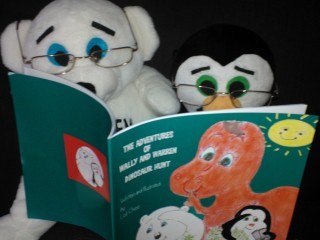
You can make your story twice the power of emotions and feelings by adding dialogue to your character driven story. Just make sure you use the correct punctuation or you will lose your reader. I keep a chart by me so I can double check it to make sure I am punctuating properly.
Happy Writing!
Lise’ Chase
The Adventures of Wally and Warren
Next, I would like to introduce you to AJ Cosmo. He is the author of several children’s stories all are a fun, silly read that help parents to convey an important message. Written for the transitional reader, A.J.’s stories allow your child to develop and master a new level of reading. You can learn more about AJ and his stories, by clicking on his name and following the link to his page
Can You Write a Story?
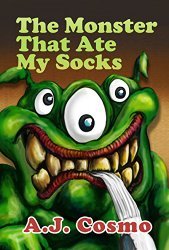
There is a ton of information out there on how to write; conflicting rules, definitions, techniques, and wisdom abound. In my experience, there are two things that every person should learn:
A) Anyone can tell a story. B) Most of what is written is garbage.
Proof of point A can be found in any casual conversation that you have ever had. “Did you hear about what Susan did at work yesterday?” is a story. Humans communicate to either inform or entertain and most of the time we do so in the form of a story. Simple gossip usually has a beginning, a middle, and an end, and can even have a moral. Susan is being gossiped about because she was late for work for the fifth time and now she’s in trouble with her boss.
So if everyone already tells stories, why isn’t everyone a writer? Simple: reason B. Children especially have a warped view of the work required in creative labor. Part of that is to blame on shows such as “The Voice” which declares that talent is innate and judgment happens once. Most of the confusion, however, comes from the end product appearing so effortless. A painting is visually absorbed in seconds, regardless of how many years it took to paint. Therefore it’s logical for people to expect that writers generate perfect prose instantly. Since their prose are likely awful, most people simply say they cannot write and give up.
Little do they know how many words the average writer throws out. (I’d like to point out that at this point in writing this tutorial I have re-read and changed the previous passage five times and deleted around fifteen words. Also I just found another typo…) It’s important for writers, escpecially young writers, to give permission to themselves to fail. Your first draft will be awful, but that’s okay, because once you see what’s there you will have a better idea of where it needs to be. Stories get better the more that they are shared. Humans embellish events as they are retold based upon the reaction of the listener. I have no doubt that this is how the great stories were first formed.
So let your first draft roll out of your hands and do not judge it harshly. Tell your stories like you are telling a close friend. Fill in all the details that your friend would have to know, but also make sure your friend doesn’t fall asleep. Read it again and see what needs to change. Everyone is a storyteller. Everyone starts out as a really bad storyteller, too. The only difference is that some of us are stubborn enough to make frustration a career.
Keep writing,
AJ
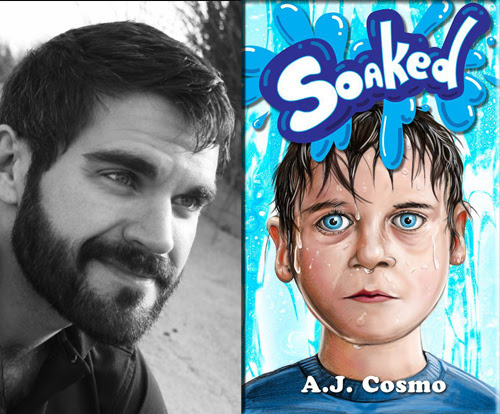
Next up we have Cat Michaels! Cat Michaels!

Cat’ is the author of Sweet T and the North Wind, and Finding Fuzzy a You Decide tale of a lost friend. Her stories are chapter books for early- and middle-grade readers that tell of everyday life, with a twist of magic and mystery. She has had the opportunity to help students from kindergarten to college during two decades in her education. Her books may also open young minds to new ways of thinking, not to mention being a fun to read, too!
Where to Start?
I just turn out the best-written story I can for children to enjoy that also serves as a model for the written word. A powerful way to teach writing is to have children read assigned short passages of favorite books together in teams to look for specific writing techniques being taught. What is the voice? Why did the author use it? How does the author use any of the five senses to help you enjoy the story? What is your favorite passage on this page? Why do you like it? Find a sentence that you like. What is the subject? Action? Does it make complete sense? Teaching dialogue can be tough, especially when separating it from discourse, which is that tricky he-said/she-said summary, but not a direct quote. If I were in the classroom today, I would break kids into teams and introduce them to the bitstrips app, where users create simple comic strips using dialogue balloons. Each team would have a common scenario to storyboard and script dialogue…..what movie to see, the best things to eat for lunch, what game to play during recess, etc. once the comic strip is completed, shared, and enjoyed, THEN I would introduce the concept setting up dialogue with text and punctuation for the whole group. The teams could return to their bitstrips story and turn their dialogue balloons into scripted writing. Hope this helps. Just some ideas off the top of my head for you to use or not.
Take care!
Cat Michaels
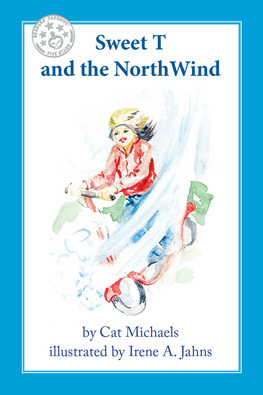
Please give your attention to Rhonda Paglia, a retired Elementary Teacher from Pennsylvania. Author of “Grammy Pags Stories” for Kids!
The 5 w’s of Writing!
One of my jobs as an elementary teacher was to introduce students to story writing. This can be a daunting task for some kids! I used the following tips to help them get started. Once they answered the following questions, the task of completing the story writing project was a little easier.
Tip #1: Make sure to include the 5 W’s (Who – Where – When – What – Why) and 1 H (How) in your story.
Tip #2: Make sure your story has three parts: a Beginning, a Middle, and an End.
Which part goes where?
The BEGINNING includes: Who – Where – When
Who: Who is your story about? Who are the characters in your story? Use adjectives to describe your characters so your reader gets to know your character(s).
Where and When: This is also called the SETTING. Where does your story take place? When does it happen? Does your story take place on an ocean beach in the middle of hot summer day, or is the setting a spooky haunted house on a cold fall night? Use words to describe the setting and when your story takes place.
The MIDDLE includes: What – Why
What and Why: This is also called the PLOT. It’s the biggest part of your story. What problem is your character trying to solve, or what trouble or mess did your character get into? Why did this problem happen? What are the details and series of events?
The END includes: How
How: This is also called the SOLUTION. How does your character solve the problem and get out of the big mess?
Have fun, and be sure to use the 5 – W’s (Who – Where – When – What – Why) and 1 – H (How) when writing the beginning, middle, and end of your story!
Grammy Rhonda!
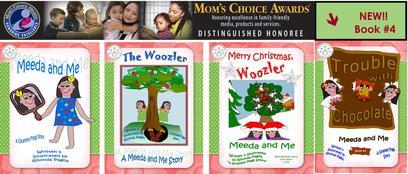
Last, but certainly not least, Rosie Russel! Rosie Russell is the author and illustrator of Beasley’s Journey, Maggie, Millie, and Merrie’s Magical Adventure, Avi Jackson Best Friends, A Search and Find of Every Kind with Jake and his dog named Cain, and her latest release, Maggie, Millie, and Merrie’s Magical Coins. She has studied Early Childhood Education and has taught students in elementary and middle school for fifteen years in the Midwest.

A few pointers for writing dialog.
Knowing the audience you are writing to, is the first key. This helps you focus on what your writing piece will be about and the tone that you use. Are you writing to entertain? Is your goal to inform a group on a subject? Or are you trying to persuade a particular audience?
Once you know your audience, what voice or tone will you convey? What is the personality of the person speaking in your dialog? This brings a strong view and purpose to the reader’s experience. When writing, what emotions do you want your reader to feel in your story or situation? When adding your dialog, word choices, punctuation, paragraphing, and style helps strengthen a writer’s voice.
Another thing to consider is to check to see if you are using an active voice or a passive voice. This gives the reader a sense of clarity. There are many examples on the internet to look up these differences. Here is a link to explain more on active and passive voices used in the English language: http://creativewriting.wikia.com/wiki...
When writing fiction, action sentences are more exciting and pack a punch. Passive sentences are wordier for readers and can become boring. Another way to find a passive voice in your writing is if the word “was” is used too often. Here are a few example:
Active: The boy threw the ball.
Passive: The ball was thrown by the boy.
Active: The cat ate the mouse.
Passive: The mouse was eaten by the cat.
When I start a story, I like to use a simple web process to fill in. You can make as many of these as you want to keep your story organized. First, I like to make one for the title, setting, characters, etc. A second web can be used for deeper story details. Next, after I have all the information to get started, I make a book out of paper. I make it to the actual size that it will be when printed. Edit this many times if needed. It gives me a “visual” feel for what it will contain. I can add more details along the way.
All the best,
Rosie.
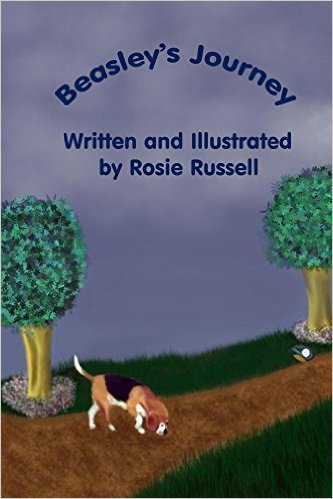
I hope everyone enjoyed this 2 part blog series on narrative writing. If you missed last weeks blog Just visit my website www.ablogforyourthoughts.com
Big thanks to all of the authors involved to help bring this project together. To learn more about each author, their books, and how to contact them simply click on their names highlighted in red and follow the link to their page. Best of luck to all who are exploring the writing world!
Published on December 01, 2015 16:33
•
Tags:
aj-cosmo, authors, blog, blogging, book, books, carmela-dutra, cat-michaels, children, dialogue, guest-blogger, help, instruction, lise-chase, narrative, narrative-writing, parents, passive, rhonda-paglia, rosie-russel, school, students, teachers, tests, writing, written



